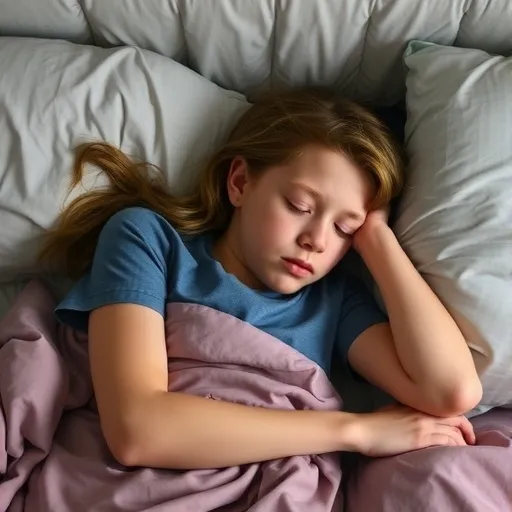Adolescence represents a delicate period marked by profound biological, cognitive, and psychosocial transformations, making it a critical window for mental health interventions. Among the most troubling issues confronting this demographic is self-harm, a complex behavior associated with a heightened risk of suicide and other adverse outcomes. Recent epidemiological data have indicated an alarming rise in self-harm rates among young people, prompting urgent calls for research into modifiable risk factors that could mitigate this trend. In this context, sleep disturbances have emerged as a potential key player, given their pervasive presence in adolescent populations and their deep connections to emotional regulation and executive function. By analyzing sleep patterns and self-harm reports at ages 14 and 17, the study delineates how sleep insufficiencies and disruptions not only correlate with concurrent self-harm but also predict future risk. . Similarly, prolonged sleep onset latency and frequent night awakenings were robustly associated with heightened self-harm risk across both time points. These results persisted even after controlling for several confounding variables traditionally implicated in adolescent self-harm, including sex, socioeconomic status, prior self-harm history, global self-esteem levels, and notably, depressive symptoms. This highlights sleep as a uniquely significant and independent correlate. Sleep disruption is recognized as a modifiable risk factor, offering a tangible target for intervention programs aimed at reducing self-harm incidence among adolescents. Sleep hygiene strategies, cognitive-behavioral therapy for insomnia, and broader public health campaigns promoting healthy sleep schedules may serve as viable preventative measures. Given that sleep problems precede or co-occur with self-harm behaviors, early identification and rectification of sleep issues could alter the developmental trajectory of vulnerable youths, reducing their risk for long-term self-injury. Beyond its clinical significance, this study also challenges the scientific community to rethink the role of adolescent sleep health in psychiatric research and intervention frameworks. Sleep deficits during adolescence are widespread, with estimates indicating that up to 70% of teenagers fail to achieve recommended sleep durations. Factors underlying this phenomenon include biological shifts in circadian rhythms, increasing academic and social pressures, and pervasive screen use — all converging to create a perfect storm for sleep insufficiency. By identifying sleep as an independent risk factor for self-harm, the research compels schools, parents, and policymakers to prioritize sleep as a central pillar of adolescent well-being.
Thank you for reading this post, don't forget to subscribe!Early Teen Sleep Issues Linked To Increased Risk Of Future Self Harm



